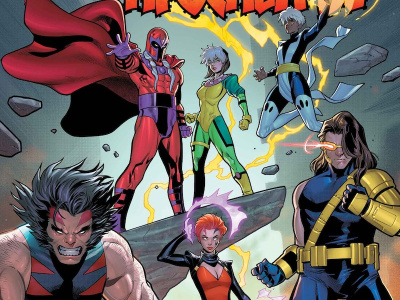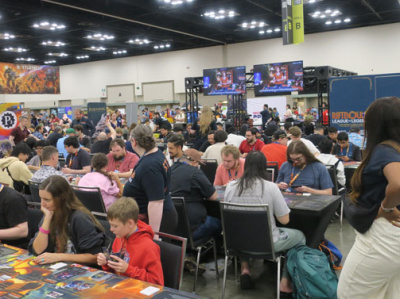 Some of the latest moves by comic and pop-culture companies test the limits of the old PR aphorism.
Some of the latest moves by comic and pop-culture companies test the limits of the old PR aphorism.Hey, did you hear about that Spider-Woman cover variant by Milo Manara?
Unless you’ve been on vacation in Northern Iraq, the answer is probably yes. Terrible embarrassment for Marvel, right? Big black eye.
Maybe. Or maybe not.
The butt of criticism. The facts in the case are pretty simple. Marvel asked an older Italian male artist famous for his erotic depictions of full-figured women to create a cover for one of their new titles featuring a female protagonist and – shocker! – Manara delivered exactly what you’d expect: a heart-shaped valentine to his favorite part of the female anatomy, tastefully adorned in skintight red spandex.
Then – also shocker! - just about every comic fan with an opinion and access to the internet – which is to say, all of them – raced to their keyboards to get to the bottom of this controversy (see “’Spider-Woman’ Manara Variant Spurs Controversy”). Some of those fans even write for publications that reach beyond the comics world, like Slate and Huffington Post.
Most of the response has taken the form of outrage, confusion and questioning of Marvel’s taste and judgment. Nearly all of the criticism raises right-on points about the ways that women are represented in mainstream comics and contributes to a better understanding of the issue. A few critics have even pointed out how this flies in the face of the otherwise-excellent job that Marvel has done lately to create comics for a more gender-balanced audience.
Then, as comic relief, a defensive and slightly tone-deaf Manara wades into the controversy, again with entirely predictable results.
But what does this add up to? An avalanche of publicity for a title that might otherwise have passed completely unnoticed. That sounds like a win for Marvel, no matter what the critics are saying.
Sinking the bank shot. The technical term for what Marvel did here is “scene hacking,” which basically means an outsider playing the predictable dynamics of a subculture against itself to create a better outcome for itself. As PR goes, this isn’t three-dimensional chess, it’s Newtonian physics. Equal and opposite reaction, and all that. Any decent pool player could map out the shot for you.
So bully for Marvel. If this was a deliberate tactic, then clearly movie-making and comic-making aren’t the only things they’re figuring out how to do better these days. And if it wasn’t intentional? Sometimes even a lousy pool player can look like Minnesota Fats when they get a good bounce off the cushion.
Face down in Sin City. Of course the reverse-publicity angle isn’t always a winner. Sin City 2: A Dame to Kill For already had an ill-favored look as it staggered out of its endless production process into the cold light of day. Given the choice of how to attract attention to this film upon its release, the PR folks probably concluded that their best angle was to focus on the quirky, opinionated creator with deep roots in the fan community. The problem is, Frank Miller’s name on the picture was probably enough to drive away any fans who had been paying attention to this “quirky, opinionated creator” for the past decade or so.
But if they could cultivate a narrative of “abrasive, misunderstood genius comes out of the woodwork with long-delayed masterpiece,” they might be able to generate some earned media (actual stories, not ads) in strategic outlets: pieces that would pique the curiosity of lapsed fans who may have read Dark Knight, Elektra or Sin City back in the day and wondered what good old Frank Miller was up to these days.
Earning it the hard way. Last week, Wired ran an epic profile of Frank Miller in advance of the release of Sin City 2. This was also epically good placement for this kind of piece, as Wired hits the prime demo of geek-adjacent urban techno hipsters where they live.
Sean Howe, author of Marvel: The Untold Story, served up a balanced and excellent article entitled “After His Public Downfall, Sin City’s Frank Miller Is Back (And Not Sorry).” Unfortunately, it was accompanied with a photograph of Miller by photographer Richard Burbridge that seems destined for iconic status, and not in a good way. Miller may have been going for edgy, but in the photo, he looks haunted, broken and more than a little crazy.
If you got passed a link to this story on social media, it probably came with that photo. And for fans wondering why it took so long for the film to see the light of day, that picture tells a story: not the kind of story that makes you want to spend the last weekend of summer inside a movie theatre getting Frank Miller’s perspective on crime, violence, sex and justice.
Bad PR wasn’t to blame for the massacre that Sin City 2 faced at the box office, and it’s not clear that any PR could have saved it. But if the Weinstein Company was looking for a bank shot, the best they managed was scratching off the 8-ball.
--Rob Salkowitz (@robsalk) is author of Comic-Con and the Business of Pop Culture. He and his wife have volunteered as Eisner Awards staff for the past 10 years.
The opinions expressed in this column are solely those of the writer, and do not necessarily reflect the views of the editorial staff of ICv2.com.







